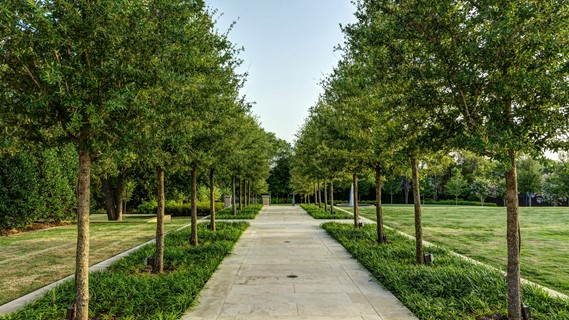Everything about Hilton Head Landscapes
Table of ContentsTop Guidelines Of Hilton Head LandscapesSome Of Hilton Head LandscapesSome Known Details About Hilton Head Landscapes The 2-Minute Rule for Hilton Head Landscapes6 Easy Facts About Hilton Head Landscapes DescribedExcitement About Hilton Head LandscapesThe Greatest Guide To Hilton Head LandscapesThe Ultimate Guide To Hilton Head Landscapes
Kind compatibility is additionally a significant part of unity in designone or 2 noticeably various forms are great for contrast and focus, yet typically all other forms should have some similarities for a combined look. Appearance describes how coarse or great the surface of the plant or hardscape material feels and/or looks.

Examples of plants with coarse appearance include philodendrons, agaves, bromeliads, hollies, palms, and hydrangeas. Hardscape with crude appearance includes rough-cut rock, rough-finished block, and unfinished wood with knots and a raised grain. Matured or old building and construction product that maintains a weather-beaten surface area is often crude in structure. Characteristics that create fine appearance include small vegetation; thin, strappy fallen leaves (yards) or tall, slim stems; little, dense branches and small branches; long stems (creeping plants); and small, delicate blossoms.
Facts About Hilton Head Landscapes Uncovered
The majority of plants are moderate structure, because they can not be called having either coarse or great structure. They are identified by medium-sized fallen leaves with simple shapes and smooth edges. The average-sized branches are not largely spaced nor widely spaced, and the total kind is typically rounded or mounding. Medium-textured plants serve as a background to web link and merge the crude- and fine-textured plants.

To make an area feel smaller sized, put the crude structures along the external boundary and the fine textures closest to the audience. The information of the coarse appearance makes the plants show up closer and makes the area feel smaller sized. The viewed appearance of plants can likewise alter with the distance from the plant.
8 Simple Techniques For Hilton Head Landscapes
Vibrant colors increase the contrast and make the texture show up coarser, while muted colors can flatten appearance. Hardscape with a rugged texturesuch as very rough rocks and vibrant, big timberstends to make all plant material show up more medium distinctive. Designers frequently develop an appearance research (Figure 8) on paper to assist make a decision the plan of plant products.
Color in plant material and hardscape includes interest and range to the landscape. Shade is the most noticeable component in the landscape and is typically the emphasis of most home owners; however, it is likewise the most temporary aspect, generally lasting only a few weeks a year for specific plants.
Everything about Hilton Head Landscapes
A basic summary of the shade wheel consists of the 3 key shades of red, blue, and yellow; the 3 second colors (a mix of two primaries) of green, orange, and violet; and 6 tertiary colors (a mix of one nearby main and additional color), such as red-orange. Color theory discusses the relationship of colors to every other and how they should be used in a composition.

Comparable (occasionally called unified) color schemes are any type of 3 to 5 colors that are nearby on the color wheel, such as red, red-orange, orange, yellow-orange, and yellow, or blue, blue-violet, and violet (landscapers hilton head island). The colors relate to each other because they commonly include 2 primary colors mixed to form a second and 2 tertiary shades, which suggests they share usual properties
Corresponding shades are frequently found normally in blossoms; a typical set is yellow and violet. Shade is discovered in the flowers, vegetation, bark, and fruit of plants.
Fascination About Hilton Head Landscapes
Green vegetation in all its various shades is the leading color by amount, but other shades record attention quicker as a result of their high contrast to the shade eco-friendly. Color is likewise discovered in structures, rocks, pavers, timber, and furnishings. Most shades in natural materials, such as rock and wood, are commonly muted and have a tendency to be variants of brown, tan, and light yellow.
Colors have residential properties that can impact emotions, spatial assumption, light quality, balance, and emphasis. Awesome shades tend to be calming and need to be utilized in areas for relaxation and serenity.
Not known Details About Hilton Head Landscapes
The "temperature" of shades can also influence the assumption of distance. Awesome shades have a tendency to recede and are regarded as being farther away, making a hop over to here room feel bigger. Warm colors tend to advance and are viewed as being closer, making a space feel smaller sized. Shade can additionally be utilized to record interest and direct sights.
For instance, brilliant yellow, which has the highest intensity, additionally has a high comparison with all other colors (frequently referred to as a "pop" of shade) and must be used moderately. A percentage of extreme color has as much visual weight as a large quantity of an extra controlled or weak color.
Similar (often called harmonious) shade systems are any three to five colors that are nearby on the color wheel, such as red, red-orange, orange, yellow-orange, and yellow, or blue, blue-violet, and violet. The colors belong to each other because they usually consist of two primary colors mixed to create a second and 2 tertiary shades, which means they share common properties.
Hilton Head Landscapes Fundamentals Explained
They tend to have high comparison in between them. One of the most typical sets are violet and yellow, red and environment-friendly, and blue and orange. Corresponding shades are commonly discovered normally in flowers; a common set is yellow and violet. Color is found in the flowers, vegetation, bark, and fruit of plants.
Green foliage in all its different shades is the leading color by amount, however other colors capture attention quicker as a result of their high comparison to the color environment-friendly - landscaping hilton head sc - https://www.anyflip.com/homepage/laavm#About. Shade is likewise located in buildings, rocks, pavers, timber, and furnishings. Most shades in all-natural products, such as stone and timber, are usually muted and often tend to be variations of brownish, tan, and pale yellow
What Does Hilton Head Landscapes Mean?
Colors have residential properties that can impact feelings, spatial assumption, light top quality, balance, and emphasis. Great colors have a tendency to be soothing and ought to be utilized in locations for leisure and calmness.
Amazing colors tend to decline and are viewed as being farther away, making a room really feel larger. Shade can additionally be made use of to catch attention and straight views - https://h1tnhdlndscps.start.page.
Bright yellow, which has the highest possible intensity, additionally has a high comparison with all other shades (commonly described as a "pop" of shade) and should be made use of sparingly. A tiny quantity of extreme color has as much visual weight as a huge amount of a much more controlled or weak color.
Comments on “How Hilton Head Landscapes can Save You Time, Stress, and Money.”